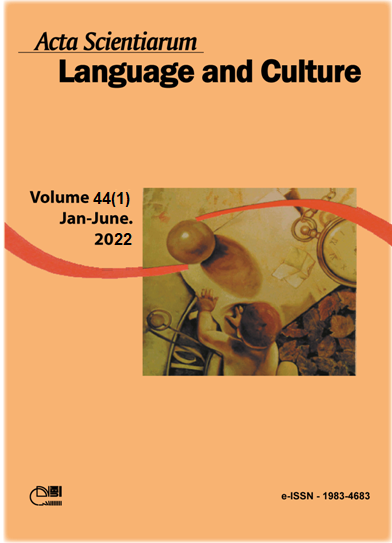Malationa, malation ou malatiom? A variação denominativa no processo de criação de um glossário bilíngue da área de química de pesticidas
Résumé
A presente pesquisa visa a atender às necessidades de um estudo terminológico na área de química de pesticidas, tendo em vista o fato de o Brasil ser um dos países mais produtivos em atividades agrícolas no mundo. O estudo parte do problema tradutório e terminológico da área, previamente observado por Pinto e Lima (2018) e Souza (2019), e propõe o levantamento de termos da área para a elaboração de um glossário português ⇔ inglês. A fundamentação teórica deste trabalho se baseia em estudos sobre Terminologia (Krieger & Finatto, 2004; Finatto, 2004; Bevilacqua, 2013), Química (Abakerli et al., 2003) e Linguística de Corpus (Sardinha, 2000; Tagnin, 2002). Neste artigo, explicamos o processo de criação do corpus de estudo, bem como os critérios para seleção dos candidatos a termos em inglês. A fim de ilustrar as ocorrências de variação denominativa durante a seleção dos equivalentes em português, apresentamos os passos utilizados para a seleção do termo mais adequado dentre as variantes vernaculares em português ‘malation’, ‘malationa’ e ‘malatiom’ e mostramos por que ‘malation’ é a forma escolhida, levando-se em consideração sua frequência absoluta, Average Reduced Frequency, coeficiente de variação, número de resultados em pesquisa na web, bem como critérios linguísticos, conceituais e normatizadores. Concluímos que a parceria entre ferramentas informatizadas e conhecimento especializado, tanto em linguística quanto em química, trouxe benefícios à discussão que não seriam alcançados somente por meio de cálculos computacionais.
Téléchargements
DECLARAÇÃO DE ORIGINALIDADE E DIREITOS AUTORAIS
Declaro que o presente artigo é original, não tendo sido submetido à publicação em qualquer outro periódico nacional ou internacional, quer seja em parte ou em sua totalidade.
Os direitos autorais pertencem exclusivamente aos autores. Os direitos de licenciamento utilizados pelo periódico é a licença Creative Commons Attribution 4.0 (CC BY 4.0): são permitidos o acompartilhamento (cópia e distribuição do material em qualqer meio ou formato) e adaptação (remix, transformação e criação de material a partir do conteúdo assim licenciado para quaisquer fins, inclusive comerciais.
Recomenda-se a leitura desse link para maiores informações sobre o tema: fornecimento de créditos e referências de forma correta, entre outros detalhes cruciais para uso adequado do material licenciado.




















6.png)









